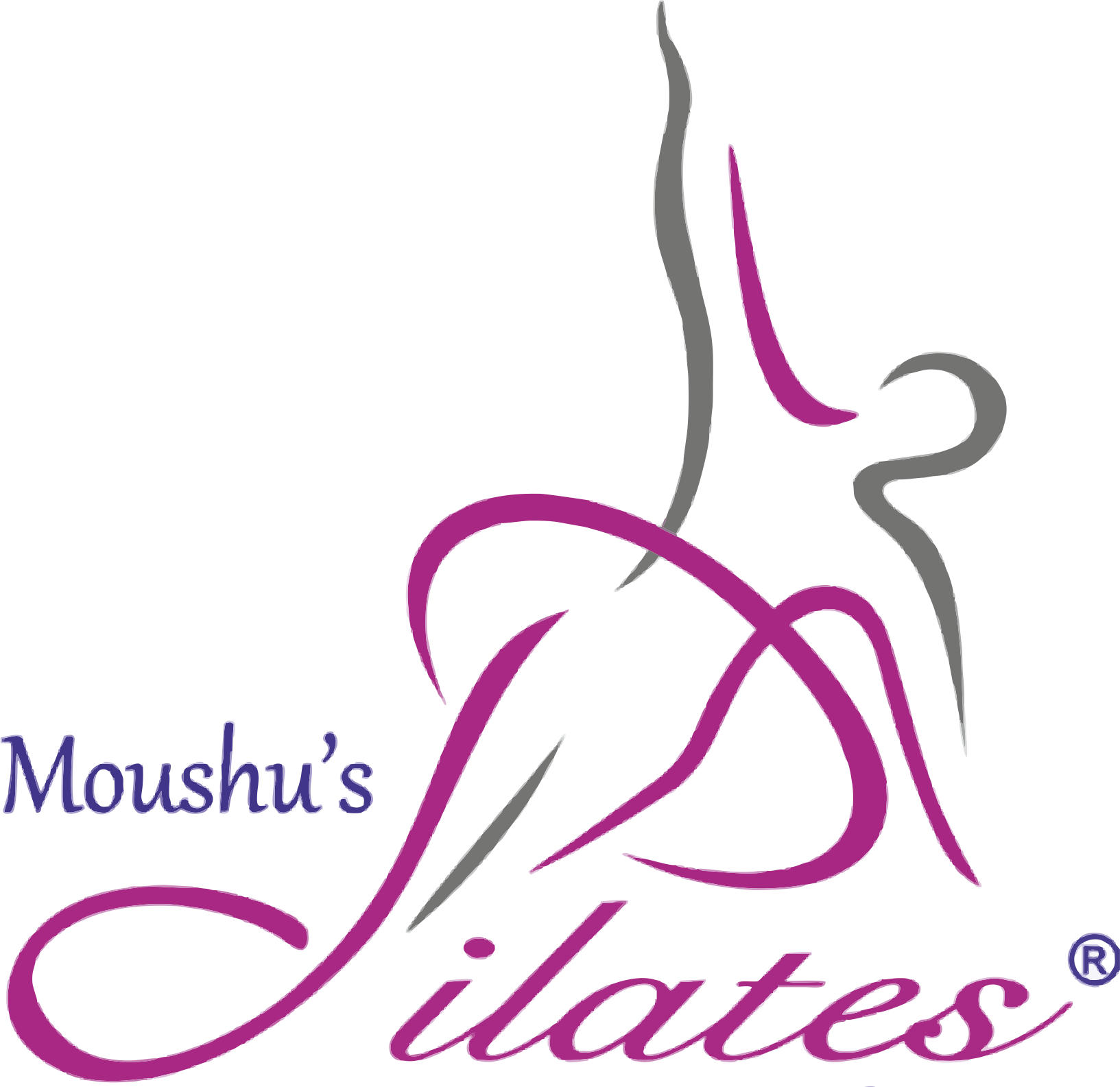Basics of Anatomy: Knee Joint

As young people in our 20s and 30s, we take our mobility for granted. When we think of knee pain, we always associate it with our parents and grandparents. That is something we assume is far away in the future and we will deal with it when we have to. We hardly realise how we use our joints now will affect the conditions of our knees when we are older. In this blog, we discuss the basic anatomy of the knee joint, and things you can do to keep it healthy, way into your old age.
Anatomy
The knee joint is a complex of joints. It is a synovial hinge joint that connects four bones: the femur (thigh bone), the tibia (shin bone), the fibula (calf bone), and the patella (the knee cap). And it comprises three articulations the tibiofemoral, the patellofemoral, and the tibiofibular articulations.
The surface of each bone is covered in a thin layer of hyaline cartilage which protects the underlying bone from damage. Another tougher, rubbery fibrocartilage known as meniscus is found between the femur and tibia. This acts as a shock absorber whilst doing strenuous activities such as running and jumping.
The joint is encapsulated by a joint capsule and ligaments that hold the joint in place. The inner lining of the capsule known as the synovial membrane produces a fluid (synovial fluid) that lubricates the joint to reduce friction and wear.
Many strong ligaments surround the joint capsule to reinforce its structure and hold its bones in the proper alignment. The ACL and PCL (anterior and posterior cruciate ligaments) reinforce the structure and prevent excessive gliding movement of the tibia along the femur. Pockets of adipose tissue around the joint, known as articular fat pads help to further cushion the knee from external stress.
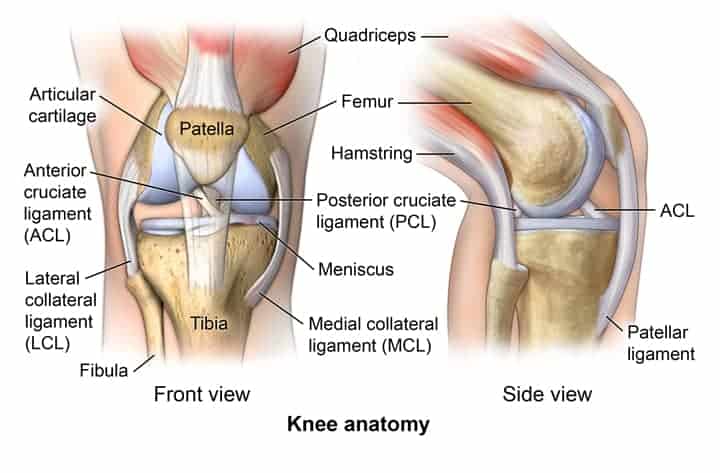
If anatomy interests you, we have series of workshops on Wonders of Anatomy and Movement where you will learn much more in detail about the bones, muscles, ligaments and their functions.
Function
A hinge joint allows movement along one axis but a special characteristic of the knee is that there is a small degree of rotation as the knee is extending (straightening) known as “the screw-home-mechanism” or locking. This component is controlled by the deep stabiliser muscle of the knee known as the popliteus muscle. This “screw-home-mechanism” allows for a better weight-bearing capacity of the knee.
The movement of flexion and extension around the knee varies with the movements around the hip. These movements are affected as muscles that produce the movement of the joint are predominantly bi-articular and hence, their action or the way they act on the knee is also affected by the alignment of the hip and the ankle. For example, the hamstring is a hip extensor and a knee flexor.
Dysfunction
As the knee joint is a complicated structure subjected to significant biomechanical stresses of weight-bearing and it is also sandwiched between the hip and the ankle it becomes a common site for injury. Any unnatural movement such as twisting, pivoting, or a forceful blow can cause injury to these structures.
Dysfunctions of the knee can be classified into three:
- Conditions caused due to excessive loading and malalignment leading to inflammation like Jumper’s knee (inflammation of the patellar ligament due to overuse in sports such as basketball) and Housemaid’s knee(repetitive friction affects the bursa).
- Injury due to contact sports causing ligament tear because of a sudden change of direction of the lower leg for example, whilst kicking the ball in football.
- Degenerative changes in the knee like osteoarthritis due to weight-bearing stresses on a knee which are badly aligned as a result of a wrong alignment of the hip or the ankle.
Pilates for the Knee
Our knees are under constant biomechanical stress due to weight-bearing and it is essential that we keep the joint healthy. As a lot of the conditions that cause stiffness or pain in the knee are actually due to weakness in the hip and the ankle, it is important to work on the lower body as a whole.
The focus of Pilates can be two-fold:
- Working on various components of muscle balance to improve posture especially if one is playing a sport
- Working on the same concept but with Rehab Pilates to heal from an injury.
If there is excessive internal rotation, it can cause loading stresses on the inner aspect of the knee. Then we need to work on the gluteal muscles of the hip. We also work on dynamic stretching for the hip and knee flexors viz, quadriceps, hamstrings, and calf muscles. And lastly, Pilates can help in gait training.
The following exercises can be practiced to stabilize the hip and strengthen the knee joint:
Bridge for glute strengthening
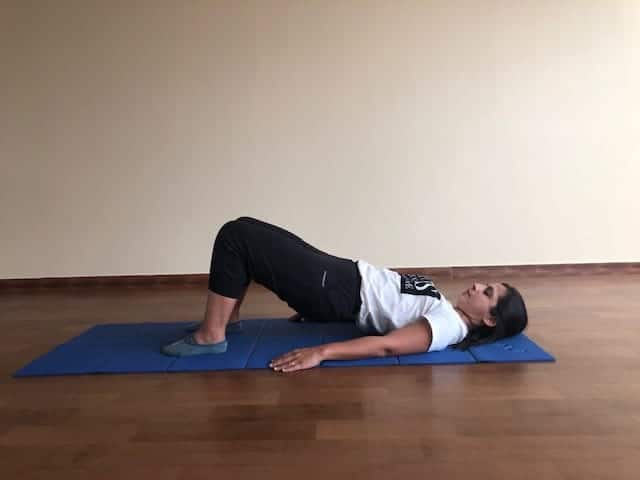
Clam for deep external rotators

Squats to work quads and hamstrings and focus on alignment of the knee
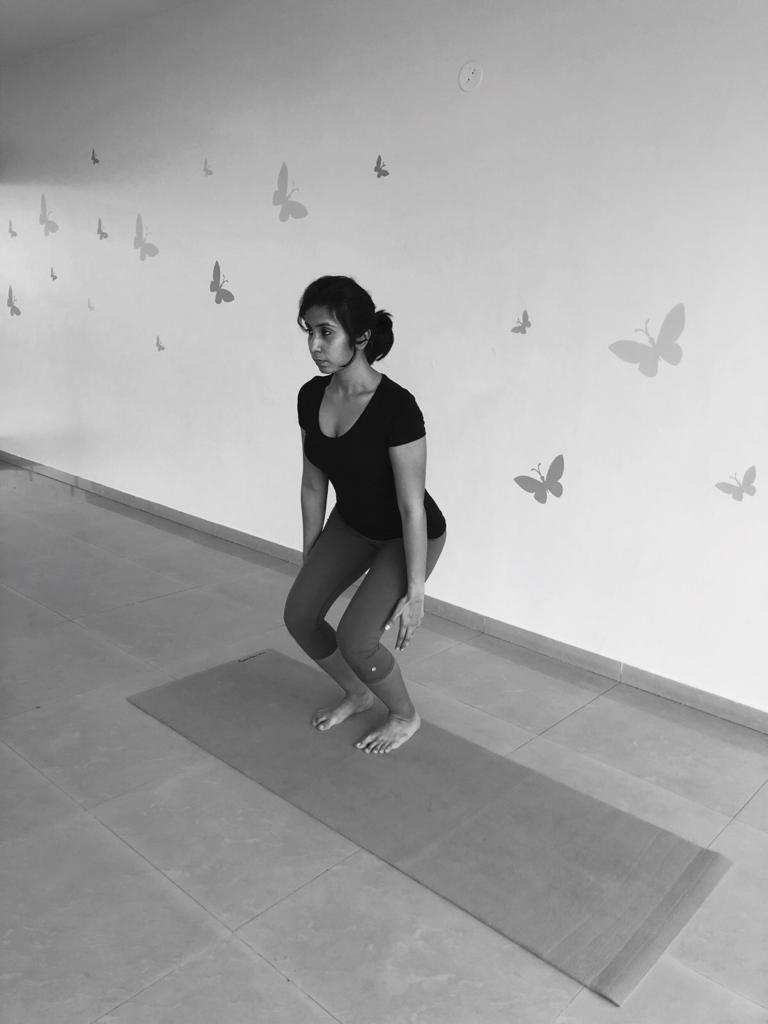
Single Leg Kick for hamstrings
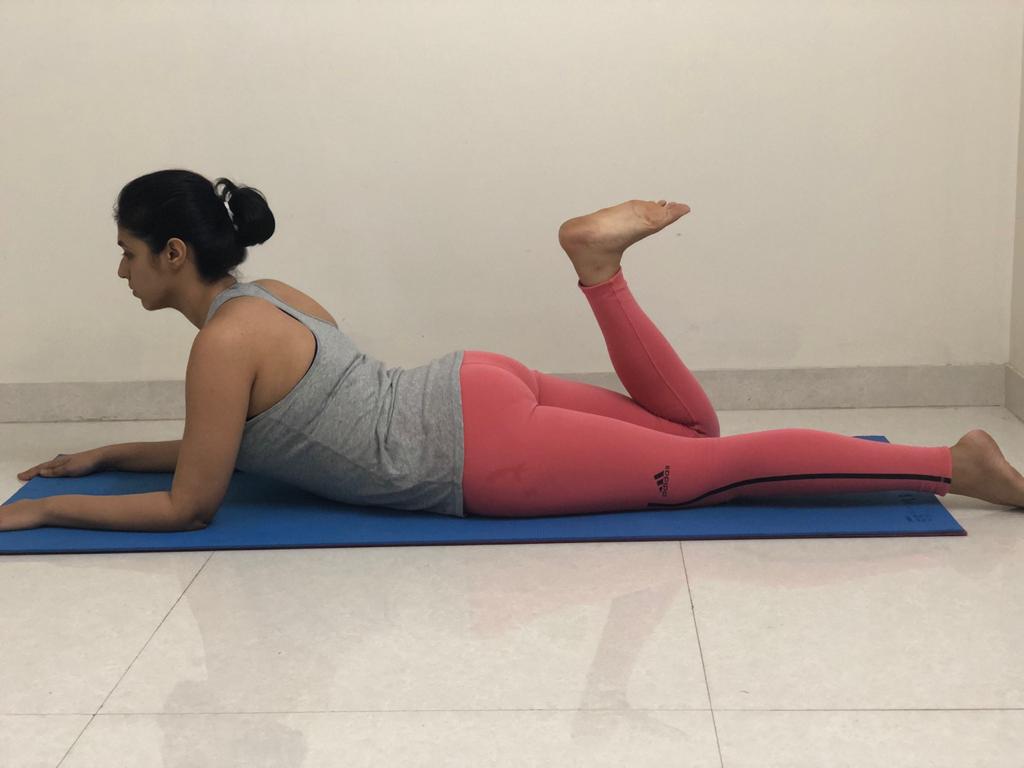
If you do have joint pain, it is very important that you have it examined. It is better to understand the cause before you undertake any form of exercise. And once your physiotherapist gives you a go-ahead, you can practice exercises to prevent further damage. As for the people who have healthy knees, don’t take these crucial body parts for granted. Let’s get moving, with flow and control of course.
Book an appointment with Dr Moushumi Kuvawala to get your pain examined.
This blog is written under the guidance of Hemakshi Basu.
A writer and Pilates instructor by profession, and a lawyer by education, Tarannum is passionate about art, travel, fitness and food. She has been practicing Pilates for the past five years at Moushu’s Pilates Studio and has experienced the transforming effects of it on her body, firsthand.
